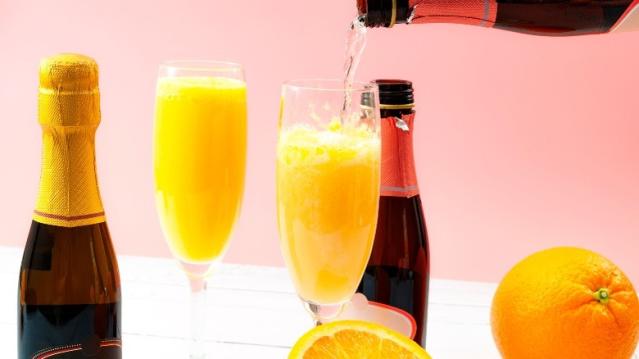Mimosas have become a quintessential brunch beverage, blending the elegance of Champagne with the refreshing tang of orange juice. But when planning a brunch gathering, one common question arises: How many mimosas can be crafted from a single bottle of Champagne? Let’s delve into this query and uncover the secrets behind the perfect mimosa calculation.
Understanding the Basics
Mimosa Composition
Mimosas typically consist of equal parts Champagne and juice. This classic recipe strikes the perfect balance between the effervescence of Champagne and the fruity essence of juice.
Standard Champagne Bottle Size
A standard Champagne bottle holds 750ml of liquid, providing the base for crafting delightful mimosas.
Calculating the Yield
Basic Calculation
Using the standard mimosa recipe, we can calculate the number of mimosas per bottle of Champagne. By dividing the total volume of Champagne (750ml) by the volume of each mimosa (typically around 120ml), we can estimate the yield.
Calculation:
Number of Mimosas=Total Champagne VolumeVolume per Mimosa\text{Number of Mimosas} = \frac{\text{Total Champagne Volume}}{\text{Volume per Mimosa}}
Number of Mimosas=750 ml120 ml≈6.25\text{Number of Mimosas} = \frac{750 \, \text{ml}}{120 \, \text{ml}} \approx 6.25
Real-World Variations
It’s important to note that real-world scenarios may vary. Factors such as pour size, glassware volume, and personal preferences can influence the final yield. However, sticking to standard measurements provides a reliable estimate.
Factors Influencing Yield

Variations in Recipe
While the classic mimosa recipe calls for Champagne and orange juice, variations abound. Some may opt for different juices like mango, guava, or pineapple, each imparting its own flavor profile. Adjusting the juice-to-Champagne ratio can alter the number of mimosas produced.
Glassware and Pouring Techniques
The size of Champagne flutes and pouring techniques can impact the volume of each mimosa. Using smaller flutes or generous pours may result in fewer mimosas per bottle.
Batch Preparation
Pre-mixing mimosas in larger quantities can streamline the serving process and ensure consistency. By preparing a pitcher or container of pre-mixed mimosas, hosts can avoid variations in pour size and expedite refills.
Tips for Maximizing Yield

Opt for Affordable Alternatives
While Champagne is the traditional choice for mimosas, budget-friendly options like cava or Prosecco can provide similar effervescence at a lower cost. These sparkling wines pair well with various juices, expanding the mimosa-making repertoire.
Experiment with Juice Varieties
Don’t limit yourself to orange juice. Explore a spectrum of fruit juices to create unique mimosa variations. Thicker juices like mango may require lighter pours, while thinner juices like cranberry can accommodate more generous servings.
Embrace Batch-Making
Batch-making mimosas ensures uniformity and efficiency during brunch gatherings. Pre-mixing allows guests to serve themselves, reducing the risk of over-pouring and optimizing the mimosa experience for all.
Mimosa Recipe
Making a mimosa is a simple yet elegant process, perfect for brunches, celebrations, or leisurely mornings. Follow these easy steps to craft the perfect mimosa:
Ingredients
- 1 bottle of Champagne, chilled
- 1 cup of orange juice, chilled
- Fresh fruit for garnish (optional)
Instructions
- Chill Your Ingredients: Ensure both the Champagne and orange juice are thoroughly chilled before starting. This enhances the refreshing quality of the mimosa.
- Select Your Glassware: Choose tall Champagne flutes to showcase the drink’s effervescence and elegance. Place them in the freezer for a few minutes to chill if desired.
- Pour the Champagne: Carefully uncork the Champagne bottle, taking care to avoid excessive fizz. Hold the flute at a slight angle and pour Champagne until it fills about halfway.
- Add the Orange Juice: Slowly pour the chilled orange juice into the flute, filling the remaining space. The ratio of Champagne to orange juice is typically 1:1, but you can adjust according to personal preference.
- Garnish (Optional): For an extra touch of sophistication, garnish your mimosa with a slice of fresh fruit such as orange, strawberry, or raspberry. This adds visual appeal and a hint of flavor.
- Serve Immediately: Mimosas are best enjoyed fresh. Serve immediately after preparation to savor the delightful combination of Champagne and orange juice.
- Enjoy Responsibly: Sip and enjoy your mimosa responsibly, savoring each bubbly sip and the convivial atmosphere it creates.
Variations
- Fruit Variation: Experiment with different fruit juices such as mango, peach, or cranberry for unique flavor profiles.
- Sparkling Wine Alternatives: While Champagne is traditional, you can use sparkling wines like Prosecco or cava for a budget-friendly twist.
- Non-Alcoholic Option: For a non-alcoholic version, substitute Champagne with sparkling water or soda and use fresh fruit juice.
Conclusion
The number of mimosas that can be made from one bottle of Champagne varies depending on factors such as recipe variations, glassware size, and pouring techniques. By adhering to standard measurements and considering these variables, hosts can confidently estimate the yield and ensure a delightful mimosa-filled brunch experience for all attendees. So, go ahead, pop that bottle of Champagne, mix up some mimosas, and toast to good times and great company!
I’m Chen Mina, from Vol de Nuit, who has a special passion for bartending, especially mixing wine, beer, and cooktail. Here you will find content about alcoholic beverages, I will bring you knowledge that few people know about this drink.






